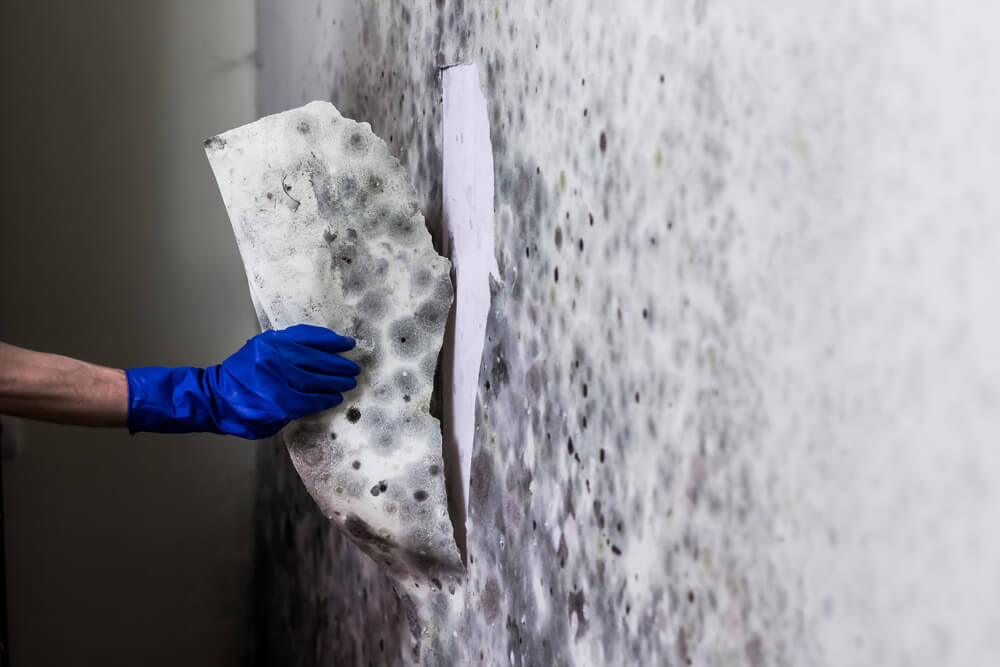Effective Article Mold And Mildew Remediation Solutions for Your Home
Mold and mildew growth in homes can be a consistent concern, commonly calling for an organized strategy for efficient post-remediation services. From comprehending the factors that contribute to mold advancement to implementing correct cleansing techniques and moisture control procedures, the process can be detailed yet important for maintaining a healthy living setting. Furthermore, exploring all-natural removal solutions and developing a regular for recurring upkeep are crucial elements of an extensive mold and mildew removal approach. As homeowners strive to deal with mold problems, discovering one of the most effective services comes to be critical for the health of their households.
Recognizing Mold Development Elements
The main element adding to mold and mildew growth is dampness. Mold spores call for dampness to sprout and prosper, making humid or damp settings very at risk to mold infestations.

Furthermore, air movement and light direct exposure can impact mold development. Locations that lack correct ventilation and all-natural light are a lot more vulnerable to mold and mildew advancement. By dealing with these variables comprehensively, individuals can effectively reduce mold growth and safeguard their living atmospheres.
Appropriate Mold And Mildew Cleaning Techniques
Making use of reliable cleaning techniques is important in preventing the recurrence and addressing of mold contamination in indoor atmospheres. When dealing with mold, it is important to prioritize safety by wearing safety gear such as goggles, gloves, and masks. The very first action in appropriate mold and mildew cleansing is to consist of the affected location to stop the spread of spores to uncontaminated locations. This can be achieved by sealing the area and using air scrubbers or adverse air devices to maintain air top quality.

Implementing Dampness Control Actions
To successfully stop mold growth and contamination in indoor environments, applying our website wetness control measures is extremely important. Dampness is the primary aspect that gas mold advancement, making it essential to take care of moisture levels within the home. One efficient action is to use dehumidifiers to maintain interior humidity levels listed below 60%. Furthermore, making sure proper air flow in areas prone to moisture accumulation, such as washrooms and kitchens, can help reduce the risk of mold growth. Frequently inspecting and repairing any kind of leakages in pipes, roofs, or windows is likewise vital in stopping excess wetness build-up. Utilizing exhaust fans while food preparation or bathing, and allowing air blood circulation by maintaining furniture a little away from walls can aid in dampness control. Using moisture-resistant products in high-humidity areas, such as mold-resistant drywall and paints, can be advantageous. By faithfully executing these moisture control procedures, property owners can efficiently reduce the chance of mold recontamination and maintain a healthy interior setting.
Using All-natural Remediation Solutions
After successfully applying wetness control procedures to avoid mold development in interior settings, property owners can currently discover the effectiveness of natural removal options in preserving a healthy living area. All-natural remediation solutions utilize ecologically friendly approaches to battle mold and mildew, making them a preferred option for those looking for safe choices. By incorporating these natural remediation options into their cleansing regimens, home owners can successfully fight mold and mildew growth while promoting a much healthier indoor environment for themselves and their households.

Keeping a Mold-Free Environment
In order to stop mold and mildew recurrence and ensure a consistently mold-free environment, it is essential for property owners to execute proactive maintenance practices. Consistently checking areas prone to mold and mildew development, such as bathrooms, attic rooms, cooking areas, and basements, is important. Dealing with any type of remove mold on fence leakages, water damage, or excess dampness immediately can dramatically reduce the danger of mold advancement. Post Mold remediation cleaning. Proper air flow in areas with high humidity levels is also essential to avoid mold growth. Utilizing dehumidifiers or exhaust fans can aid preserve optimal moisture levels and dissuade mold spores from growing.
Furthermore, preserving tidiness in the home is crucial for mold avoidance. Keeping interior plants in check and making sure appropriate drainage in outdoor landscaping can lessen moisture accumulation, decreasing the probability of mold and mildew problems.
Verdict
In conclusion, it is vital to deal with mold development elements, use proper cleansing strategies, carry out dampness control measures, use all-natural remediation solutions, and preserve a mold-free environment in order to properly manage blog post mold and mildew removal in your home - what to do after mold remediation. By following these methods, check these guys out you can protect against mold and mildew from repeating and guarantee a healthy and balanced living atmosphere for you and your family members
The primary variable contributing to mold development is dampness. Mold and mildew spores require dampness to sprout and thrive, making humid or damp environments extremely vulnerable to mold and mildew infestations.To successfully avoid mold and mildew development and contamination in indoor environments, applying moisture control procedures is critical. Additionally, making sure proper ventilation in locations vulnerable to moisture build-up, such as washrooms and cooking areas, can aid decrease the threat of mold and mildew development.After successfully executing dampness control measures to avoid mold growth in indoor atmospheres, homeowners can now check out the efficiency of all-natural removal options in keeping a healthy living area.
Comments on “After Mold Remediation Methods for Tidy Areas”